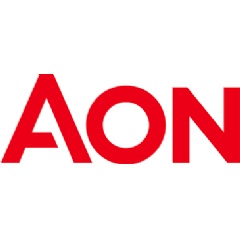.
Memorandum: to DoD Media Relations, (Larry DiRita)
From: Abbe Buck, HVPR
Question: After 40+ years, just more MSM-uber-liberal media commenting from a series of wire reports, or did any of this really happen? And is it happening now?
SEE: nation/world
Rationale for Vietnam faked in 1964, NSA historian wrote
From Wire Reports
Originally published December 2, 2005
WASHINGTON // A National Security Agency analysis released yesterday contends that an alleged 1964 attack on U.S. ships in the Gulf of Tonkin, which the Johnson administration cited as justification for greater U.S. military involvement in Vietnam, never happened, casting further doubt on the rationale for escalation of the conflict.The material posted on the Internet at midnight Wednesday included one of the largest collections of secret intercepted communications ever made available for study.
The most provocative document is a 2001 article in which an NSA historian argued that the agency's intelligence officers "deliberately skewed" the evidence passed on to policymakers on the crucial question of whether North Vietnamese ships attacked U.S. destroyers on Aug. 4, 1964.Based on the mistaken belief that such an attack had occurred, President Lyndon B. Johnson ordered airstrikes on North Vietnam, and Congress passed a broad resolution authorizing military action.The historian, Robert J. Hanyok, wrote the article in an internal publication, and it was classified as top secret despite the fact that it dealt with events in 1964. Word of Hanyok's findings leaked to historians outside the agency, who requested the article under the Freedom of Information Act in 2003.Some intelligence officials said they believe the article's release was delayed because the agency was wary of comparisons between the role of flawed intelligence during the Vietnam War and that preceding the U.S.-led invasion of Iraq.Hanyok declined to comment Wednesday. But Don Weber, an NSA spokesman, denied that any political consideration was involved."There was never a decision not to release the history" written by Hanyok, Weber said. On the contrary, he said, the release was delayed because the NSA wanted to make public the raw material that Hanyok used for his research."The goal here is to allow people to wade through all that information and draw their own conclusions," Weber said.Thomas S. Blanton, director of the National Security Archive at George Washington University, called the release of the document "terrific," noting that the eavesdropping material known as signals intelligence, or SIGINT, is the most secret information the government has."NSA may be the most close-mouthed of all U.S. government agencies," said Blanton, whose organization has published on the Web many collections of previously secret documents. "The release of such a large amount of SIGINT is unprecedented."In his 2001 article, an elaborate piece of detective work, Hanyok wrote that 90 percent of the intercepts of North Vietnamese communications relevant to the supposed Aug. 4, 1964, attack were omitted from the major agency documents going to policymakers."The overwhelming body of reports, if used, would have told the story that no attack had happened," he wrote. "So a conscious effort ensued to demonstrate that an attack occurred."Claims that North Vietnamese boats attacked two U.S. warships on Aug. 4 -- two days after an initial assault on one of the ships -- rallied Congress behind Johnson's buildup of the war. The Gulf of Tonkin Resolution passed three days later empowered him to take "all necessary steps" in the region and opened the way for large-scale commitment of U.S. forces.The Hanyok study does not necessarily reflect the agency's position."In truth, Hanoi's navy was engaged in nothing that night but the salvage of two of the boats damaged on 2 August," Hanyok wrote.He said that "the handful of SIGINT reports which suggested that an attack had occurred contained severe analytical errors, unexplained translation changes, and the conjunction of two unrelated messages into one translation. This latter product would become the Johnson administration's main proof of the Aug. 4 attack."Hanyok wrote that he did not find "manufactured evidence and collusion at all levels"; rather, it appeared that intelligence-gatherers had made a series of mistakes and that their superiors did not set the record straight.Conflicting and confused reports from the scene have long cast doubt on whether the events had unfolded as claimed.Hanyok's analysis of previously top secret intelligence adds insight on North Vietnam's communications from that time, showing, he said, that the supposed attackers did not even know the location of the destroyers, the USS Maddox and USS C. Turner Joy, as the two ships patrolled off the North Vietnamese coast.A shorter agency study done years earlier and also released yesterday indicated that the U.S. ships did not know what, if anything, was coming at them as they zigzagged to evade what the crews feared were torpedoes and as they fired on targets identified by radar.That study concluded with a wry note saying that the destroyers resumed their patrols after a heavy round of U.S. airstrikes on North Vietnamese ports, "and the rest is just painful history."A detailed chronology assembled days after the episode for the Joint Chiefs of Staff by J.J. Merrick, commander of Destroyer Division 192, reflected the uncertainty of that night.It said that sonar in many cases picked up sounds that were believed to be torpedoes but turned out to be "self noise," the beating of the ships' own propellers, or noise from patrol boats or supporting planes that were strafing the dark sea in cloudy skies, unable to see any prey.In another instance, however, the report contended that a "torpedo wake was seen by four people."The Maddox had been fired on by North Vietnamese patrol boats Aug. 2, 1964, suffering superficial damage.
Copyright © 2005, The Baltimore Sun
###
-











No comments:
Post a Comment